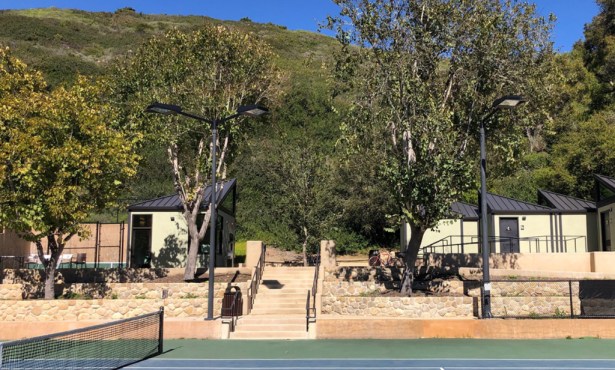Discovering the Discoverer
Alice Burr: A California Pictorialist
Rediscovered. At the Santa Barbara Museum of Art. Shows through
January 7, 2007.
Reviewed by Beth Taylor-Schott
It’s easy to miss amazing things around here, even when you’re
looking right at them. Here’s one way to know when to pay
attention: whenever you are standing in the Von Romberg Gallery at
the Santa Barbara Museum of Art, a chapel-like space that regularly
contains quiet but remarkable shows. Alice Burr: A California
Pictorialist Rediscovered is no exception. If you only stick your
head in, you will think something like, “Oh, how sweet, an early
lady photographer.” The prints will seem to be somewhat technically
primitive. And you will have missed the entire show.
 Here is what you will discover if you
Here is what you will discover if you
slow down and look and read. Most of the images are Bromoil prints,
the product of an early 20th-century technological advance that
offered photographers greater control than black-and-white silver
prints. Bromoil is notoriously difficult to master, so we can
assume that Burr more than knew what she was doing.
A close look will reveal that the prints are not grainy; instead
they are printed on textured paper. This is certainly in keeping
with the pictorialist aesthetic, but it is also in keeping with
Burr’s own project of breaking down her representations. Consider
“Black Trees,” for example. Here the artist, already working in
black-and-white, reduces the number of shades on offer nearly to
two, settling at last on three: the black of the trees, the light
gray of the sky seen between them, and the nearly white passages
that make the sky seem to glow. Over and over in these works Burr
tests the limit of how little she can offer the viewer without
abandoning her images entirely to abstraction. Even in a work like
“Woman and Child,” Burr withholds as much as she can without
allowing the subject to dissolve. In “The Fountain,” she gives us
just enough so that by looking hard at the picture we can make a
moonlit fountain appear.
Burr, quietly working in the darkroom her father built for her
in San Francisco, began producing these images in 1910, and they
are at least as ambitious as Picasso and Braque’s analytic cubism
of roughly the same period. Indeed, because she was a photographer
and could depend on the belief that she had “captured” an actual
subject with her camera, she had space to push further into what
would become arguably the strongest vein in 20th-century art.


